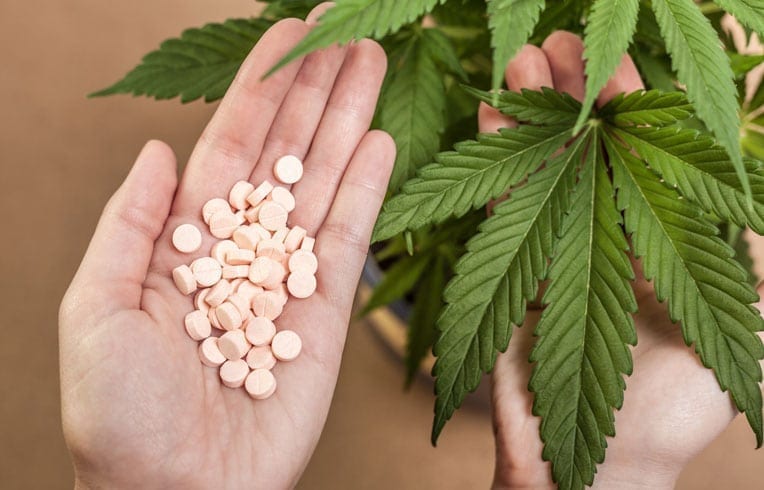Health and Wellness News, Legal, Politics
DEA Wants More Marijuana Grown And Fewer Opioids
Washington, D.C. — The Drug Enforcement Administration (DEA) isn’t exactly known as big fan of marijuana. But in a new Federal Register filing set to be published soon, the anti-drug agency is moving to more than quintuple the amount of cannabis that can legally be grown in the U.S. for research purposes—from roughly 1,000 pounds in 2018 to more than 5,400 pounds next year.
At the same time, DEA is also pushing to reduce the amount of certain opioid drugs—such as oxycodone, hydrocodone, morphine, fentanyl and others—that are produced in the U.S.
“We’ve lost too many lives to the opioid epidemic and families and communities suffer tragic consequences every day,” DEA Acting Administrator Uttam Dhillon said in a press release. “This significant drop in prescriptions by doctors and DEA’s production quota adjustment will continue to reduce the amount of drugs available for illicit diversion and abuse while ensuring that patients will continue to have access to proper medicine.”
U.S. Attorney General Jeff Sessions, a longtime opponent of marijuana legalization, added that “the opioid epidemic that we are facing today is the worst drug crisis in American history… Cutting opioid production quotas by an average of ten percent next year will help us continue that progress and make it harder to divert these drugs for abuse.”
The proposed quotas for cannabis and other drugs “reflects the total amount of controlled substances necessary to meet the country’s medical, scientific, research, industrial, and export needs for the year and for the establishment and maintenance of reserve stocks,” DEA said.
The 2,450,000 grams of marijuana the narcotics agency wants grown in the country in 2019 is a significant bump up from the 443,680 grams the agency authorized for 2018.
In addition to the huge increase in marijuana cultivation, DEA is also proposing to allow production of 384,460 grams of tetrahydrocannabinols (THC) in 2019, the same amount the agency cleared for this year.
Since 1968, a farm that the University of Mississippi has maintained a monopoly on the production of cannabis that can legally be used for research in the U.S. But scientists have long complained that it is sometimes hard to get approvals to obtain marijuana from the facility and that its product is often of low quality.
In response to these concerns, DEA moved in the waning months of the Obama administration to end the monopoly and create a process for the National Institute on Drug Abuse (NIDA) to license additional cultivators. But while more than two dozen facilities have filed proposals to become licensed to legally grow marijuana for research, Sessions’ Justice Department has blocked DEA from acting on the applications.
Members of Congress have repeatedly pressed Sessions on the issue, during hearings and most recently in a letter signed last month by eight senators.
“Research and medical communities should have access to research-grade materials to answer questions around marijuana’s efficacy and potential impacts, both positive and adverse,” the lawmakers wrote. “Finalizing the review of applications for marijuana manufacturing will assist in doing just that.”
During a Senate hearing last October, Sessions said that adding new facilities that could compete with the University of Mississippi would be “healthy.” Pressed again in April, he told senators that movement on the issue was expected “soon.”
But no announcements on authorizing more cultivators have been made.
The DEA’s huge increase in marijuana production quotas for 2019 could be a sign that it anticipates eventual approval of some of the additional grower applications, or it could just indicate that reserve stocks at the Mississippi farm are getting low and that it’s time to re-up the federal cannabis stash as interest in marijuana’s medical benefits and other effects increases among the public and scientists who wish to study it.
“While the drastic increase in requested production of marijuana by the DEA is a positive sign, significant barriers still exist including but not limited to the NIDA monopoly on cultivation and undue hurdles for researchers to qualify for a permit,” NORML Political Director Justin Strekal in an interview. “It’s time that Congress look at the 28,000 plus peer-reviewed studies currently hosted on the National Institute of Health’s online database and reform federal law by removing marijuana from the Controlled Substances Act all together.”
Once the DEA quota notice officially runs in the Federal Register, members of the public will be able to submit comments for a period of 30 days, after which time the agency may seek to amend and finalize the proposal.
Tom Angell publishes Marijuana Moment news and founded the nonprofit Marijuana Majority. Follow Tom on Twitter for breaking news and subscribe to his daily newsletter.
I’m a 15-year veteran of the cannabis law reform movement, and I know where to look to spot the most interesting legalization developments. I’m the editor of the cannabis news site Marijuana Moment, and I founded the nonprofit Marijuana Majority.
Source: Forbes Magazine (US)
Author: Tom Angell, Contributor
Published: August 16, 2018
Copyright: 2018 Forbes Inc.
Contact: readers@forbes.com
Website: http://www.forbes.com/
URL: http://drugsense.org/url/0PWdW4V1


